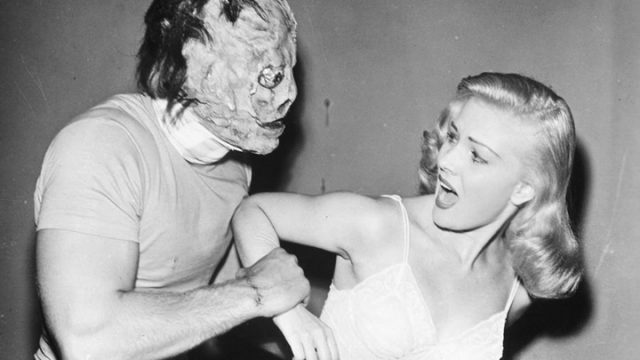I know people who were hugely disappointed that Deadpool didn’t even get nominated for a Best Makeup Oscar, because the movie showed the scars, and how could the scars not get a nomination? And the simple fact, to me at least—beyond the obvious “the Academy doesn’t like superhero movies,” which makes Suicide Squad‘s win all the more inexplicable—was that the scar makeup wasn’t really impressive to me. I have seen more horrific scarring in person. I was in elementary school when my sister was in junior high, and her best friend at the time had been in a car accident—during the gas crisis. The can of gas her father kept in the car exploded. My sister’s friend had a face that looked literally melted, and her brother and father died. That was horrific scarring. Wade Wilson looked kind of wrinkly.
This seems to be universal, to me. I rewatched Unforgiven yesterday, and there was much talk about how scarred Delilah was and how no one would ever want to sleep with her again, and all I could think was, “Eh.” Gerard Butler in Phantom of the Opera? Bad sunburn. Now, I get that putting realistic deformities onscreen can be offputting to an audience, and I don’t watch enough horror movies to know if their record is better. But I wonder, sometimes, if people like my sister’s friend, people with real deformities, feel even more freakish based on how mild movie freakishness can be.
In Danse Macabre, Stephen King talks about how sheltered the average American is from deformity. He suggests you consider even how few really bad cases of acne you see walking down an American street, and he’s not wrong. Not that this is a bad thing, of course; I am ashamed now of the fact that I couldn’t look my sister’s friend in the face for the first few times I met her, and that has to have been painful for her. Sixth grade is hard enough without that. But it does mean that our bar for “horrific face” is set very low. We just don’t have the experience.
This isn’t somewhere I necessarily want realism from film. Okay, I’d rather that we had a few more normal-looking people onscreen, but I get why that doesn’t happen. Certainly I get why real deformities don’t make it into the movies very often; they have a way of either drawing or repelling the eye, depending on the deformity and the viewer, and that distracts from the movie. But when the point is that reaction, when you’re hoping your viewer will be simultaneously attracted and repelled, what we see in the movies just isn’t enough. Delilah looked like she would heal, and perhaps that’s why there’s so much exaggeration every time someone in the movie describes what happened to her. What’s actually there isn’t horrific enough.
There’s a lot of talk about how important the R rating was to Deadpool, how the swearing and violence and so forth are integral to the character. And that’s true, and that’s part of why Deadpool has never been all that interesting a character to me in the first place. It’s also true that the music is integral to the character of the Phantom, and that’s why Butler’s portrayal grated. Not enough ability. Still. For both characters, and Delilah, and others that aren’t coming to mind right now, what matters is that we are supposed to be uncomfortable looking them in the face. I can certainly forgive Johnny Tremain for skipping over how gruesome a burn from molten silver can be; it’s a family movie made in the ’50s. But the other three are more recent; one is PG-13, and the other two are R. What’s their excuse?

